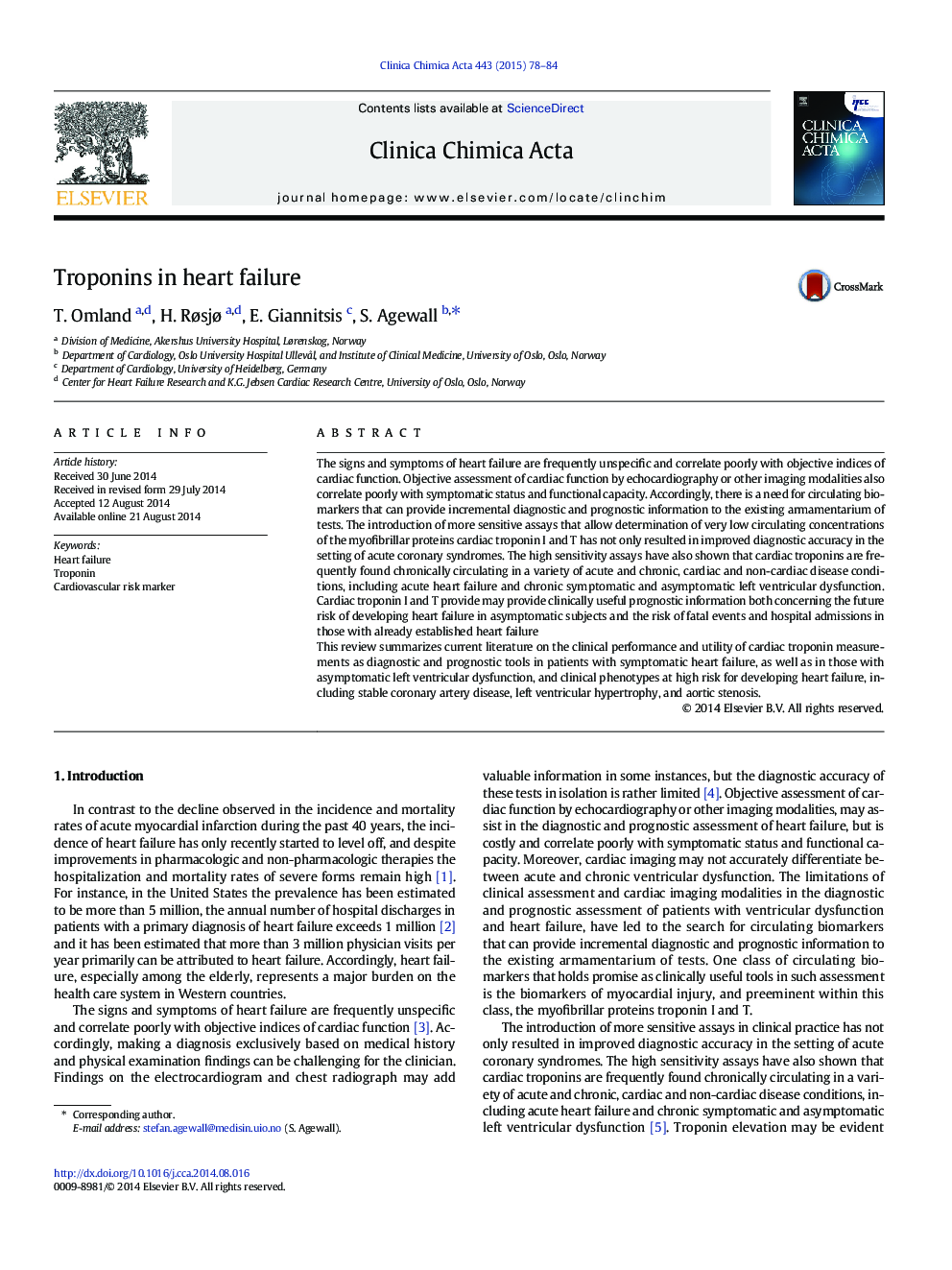| Article ID | Journal | Published Year | Pages | File Type |
|---|---|---|---|---|
| 1965276 | Clinica Chimica Acta | 2015 | 7 Pages |
•Troponin levels are often elevated in patients with heart failure.•Heart failure patients with high troponin levels have a poor prognosis.•High sensitivity assays permit troponin measurements in the general population.•Troponin levels identify subjects at risk of developing heart failure.
The signs and symptoms of heart failure are frequently unspecific and correlate poorly with objective indices of cardiac function. Objective assessment of cardiac function by echocardiography or other imaging modalities also correlate poorly with symptomatic status and functional capacity. Accordingly, there is a need for circulating biomarkers that can provide incremental diagnostic and prognostic information to the existing armamentarium of tests. The introduction of more sensitive assays that allow determination of very low circulating concentrations of the myofibrillar proteins cardiac troponin I and T has not only resulted in improved diagnostic accuracy in the setting of acute coronary syndromes. The high sensitivity assays have also shown that cardiac troponins are frequently found chronically circulating in a variety of acute and chronic, cardiac and non-cardiac disease conditions, including acute heart failure and chronic symptomatic and asymptomatic left ventricular dysfunction. Cardiac troponin I and T provide may provide clinically useful prognostic information both concerning the future risk of developing heart failure in asymptomatic subjects and the risk of fatal events and hospital admissions in those with already established heart failureThis review summarizes current literature on the clinical performance and utility of cardiac troponin measurements as diagnostic and prognostic tools in patients with symptomatic heart failure, as well as in those with asymptomatic left ventricular dysfunction, and clinical phenotypes at high risk for developing heart failure, including stable coronary artery disease, left ventricular hypertrophy, and aortic stenosis.
